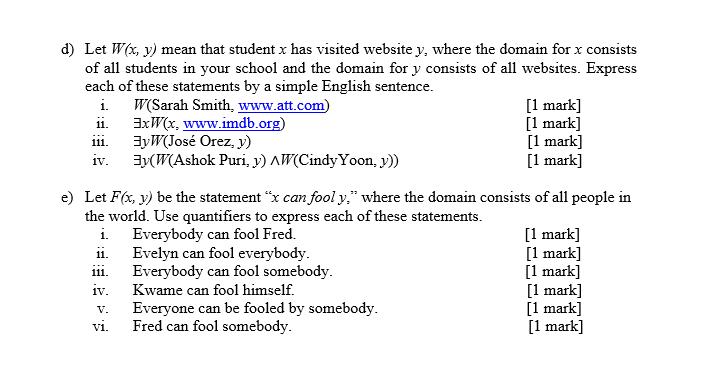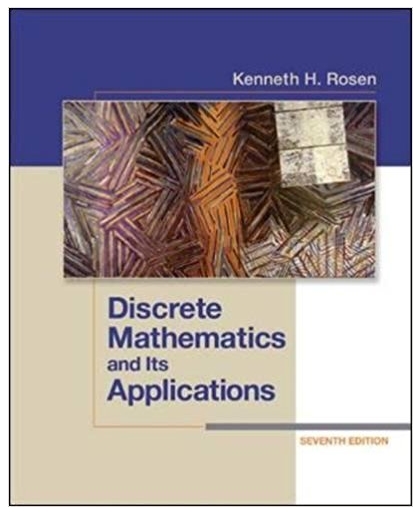Question
d) Let W(x, y) mean that student x has visited website y, where the domain for x consists of all students in your school

d) Let W(x, y) mean that student x has visited website y, where the domain for x consists of all students in your school and the domain for y consists of all websites. Express each of these statements by a simple English sentence. i. W(Sarah Smith, www.att.com) 3xW(x, www.imdb.org) 3yW(Jos Orez, y) 3y(W(Ashok Puri, v) AW(Cindy Yoon, y)) [1 mark] [1 mark] [1 mark] [1 mark] ii. i1i. iv. e) Let F(x, y) be the statement "x can fool y," where the domain consists of all people in the world. Use quantifiers to express each of these statements. i. Everybody can fool Fred. ii. Evelyn can fool everybody. Everybody can fool somebody. [1 mark] [1 mark] [1 mark] [1 mark] [1 mark] [1 mark] iii. iv. Kwame can fool himself. Everyone can be fooled by somebody. Fred can fool somebody. V. vi.
Step by Step Solution
3.42 Rating (149 Votes )
There are 3 Steps involved in it
Step: 1

Get Instant Access to Expert-Tailored Solutions
See step-by-step solutions with expert insights and AI powered tools for academic success
Step: 2

Step: 3

Ace Your Homework with AI
Get the answers you need in no time with our AI-driven, step-by-step assistance
Get StartedRecommended Textbook for
Discrete Mathematics and Its Applications
Authors: Kenneth H. Rosen
7th edition
0073383090, 978-0073383095
Students also viewed these Mathematics questions
Question
Answered: 1 week ago
Question
Answered: 1 week ago
Question
Answered: 1 week ago
Question
Answered: 1 week ago
Question
Answered: 1 week ago
Question
Answered: 1 week ago
Question
Answered: 1 week ago
Question
Answered: 1 week ago
Question
Answered: 1 week ago
Question
Answered: 1 week ago
Question
Answered: 1 week ago
Question
Answered: 1 week ago
Question
Answered: 1 week ago
Question
Answered: 1 week ago
Question
Answered: 1 week ago
Question
Answered: 1 week ago
Question
Answered: 1 week ago
Question
Answered: 1 week ago
Question
Answered: 1 week ago
Question
Answered: 1 week ago
Question
Answered: 1 week ago
View Answer in SolutionInn App



